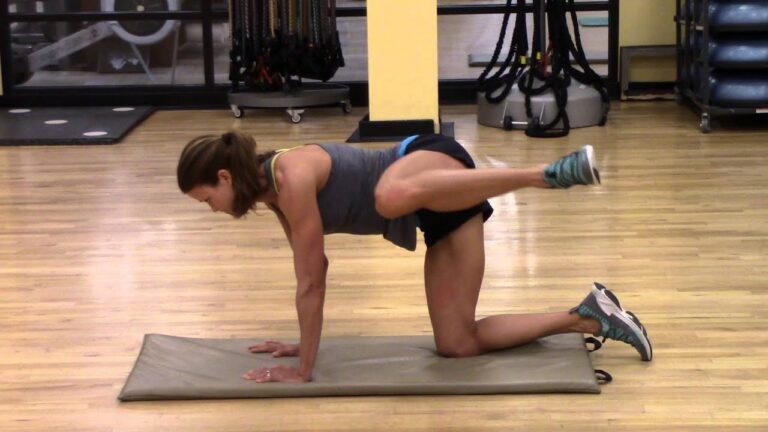The fire hydrant exercise is a popular and effective lower body workout that targets the hips, glutes, and core muscles. It gets its name from the movement that resembles a dog lifting its leg at a fire hydrant. This exercise helps strengthen and stabilize the hip muscles, improve hip mobility, and enhance overall lower body strength.
Find below a comprehensive understanding of the fire hydrant exercise.
Execution
- Begin on all fours with your hands placed directly under your shoulders and knees under your hips. Maintain a neutral spine with your core engaged.
- Keeping your knee bent at a 90-degree angle, lift your right leg out to the side, maintaining the 90-degree bend. Imagine you’re lifting your leg to the side as if a dog is lifting its leg at a fire hydrant.
- Lift your leg until it’s parallel to the ground or as high as you comfortably can without compromising your form.
- Pause for a moment at the top of the movement, engaging your glutes and hip muscles.
- Slowly lower your leg back to the starting position.
Muscles Targeted
The fire hydrant exercise primarily targets the following muscle groups:
Gluteus Maximus: This is the largest muscle in your buttocks and is responsible for hip extension and outward rotation, which are both engaged during the exercise.
Gluteus Medius: This muscle, located on the outer side of your hip, helps stabilize the pelvis and control hip movement. It’s heavily engaged as you lift your leg sideways.
Hip Adductors: These muscles are responsible for bringing your leg back to the midline of your body as you lower it after the lift.
Core Stabilizers: Your core muscles are activated to stabilize your torso and maintain proper form throughout the movement.
Benefits
The fire hydrant exercise offers several benefits:
Glute Activation: It effectively targets and activates the glute muscles, helping to improve their strength and shape.
Hip Mobility: The exercise involves abduction (moving the leg away from the midline) and external rotation of the hip, promoting better hip mobility.
Balance and Stability: Engaging the gluteus medius improves hip stability, which is essential for overall balance and preventing injuries.
Functional Movement: The exercise mimics natural hip movements, making it beneficial for daily activities and sports that involve lateral leg movements.
Core Engagement: To maintain proper form, your core muscles must engage, promoting a strong core and improved posture.
Final thoughts
Incorporating the fire hydrant exercise into your lower body workout routine can contribute to stronger hips, improved glute activation, and enhanced overall lower body strength and stability. However, if you have any existing injuries or conditions, it’s advisable to consult a fitness professional before adding new exercises to your routine.


Comments are closed.